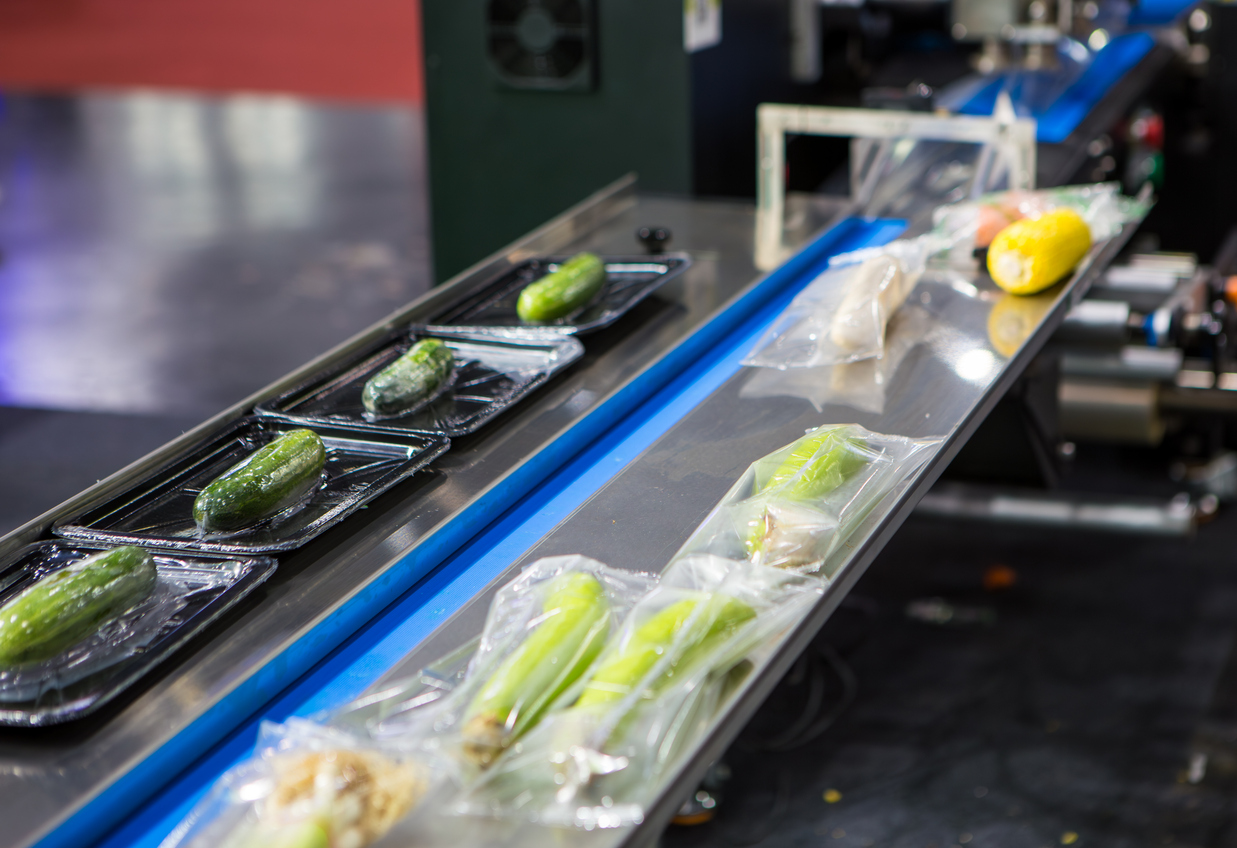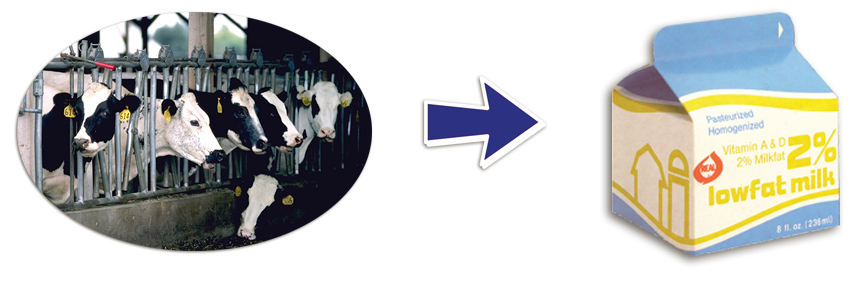Food processing is the action of transforming raw agricultural products, like grains, vegetables, meat, or milk, into end products ready to be sold. Most foods that we consume require some processing. Everything from chopping to mixing ingredients to cooking can be considered a part of food processing. A processed food has been changed physically or chemically after being harvested. The amount of processing varies from food to food, ranging from minimal to high.
Minimally processed foods are changed only a small amount between the farm and the consumer. These foods might be washed, peeled, sliced, juiced, frozen, dried, or pasteurized. They have few ingredients (often only one), which are all things that could be found in a home kitchen. Examples include skim milk, pre-washed and torn lettuce, frozen vegetables, and flour. A packaged pancake mix that includes only the dry ingredients and requires the consumer to add milk, eggs, and oil at home could also be considered minimally processed food because all of its ingredients are minimally processed. Many foods in this category are ingredients that would be used to cook a meal at home.
Moderately processed foods are somewhat changed from the form in which they left the farm. In addition to being washed, peeled, and juiced, ingredients may be mixed, cooked, and have preservatives added. Moderately processed products often have several ingredients, and most, but probably not all, of those ingredients may be found in a home kitchen. Many of these foods still require some preparation before eating. Examples include a jar of spaghetti sauce, flavored yogurt, and bread. Another example could be a pancake mix that includes all the necessary ingredients, and you just add water to make the batter. This is different from the minimally processed pancake mix because the ingredients list will include some items that are highly processed, such as monocalcium phosphate, dextrose, and glucose solids.
Highly processed foods often have many ingredients and are mostly or fully prepared in a factory. Little or no preparation needs to be done before eating. Many snack foods, like chips and candy, are highly processed. These foods contain many ingredients not found in a home kitchen that add vitamins and minerals, enhance flavor and texture, and extend shelf life. Individual ingredients may be processed before being combined for further processing. Some ingredients commonly found in highly processed foods include high fructose corn syrup (sugar extracted from corn), polysorbate 65 (an emulsifier that keeps water and oils mixed), and sodium erythorbate (a food additive in processed meats that helps to retain color and improve flavor).
Foods are processed for many reasons. Some foods are more easily digested or safer to eat with some processing. For example, cooked potatoes are more nutritious and taste better than raw potatoes, and cooking meat and eggs kills harmful bacteria that can be carried on these foods when raw. Foods may also be processed so that they will store longer, taste better, or be more convenient to eat. However, processing that involves heating foods to very high temperatures or separating whole foods into their components, can reduce nutritional value. Food processing can also be energy intensive and packaging can generate large amounts of garbage. There are both advantages and disadvantages to food processing.


